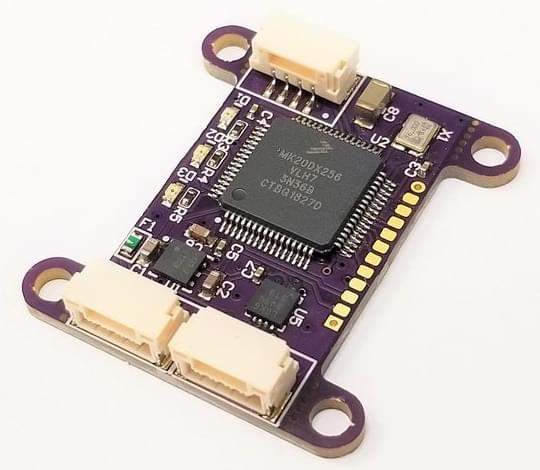Avionics Anonymous Laser Altimeter DroneCan Interface
INFO
In 2022, UAVCAN (v0) was forked and is maintained as DroneCAN. While this product still mentions "UAVCAN", it is fully compatible with PX4's DroneCAN support.
The Avionics Anonymous Laser Altimeter Interface allows a number of common rangefinders to be connected via the CAN bus (this is a more robust interface than I2C).

구매처
지원되는 거리 측정기
A full list of supported rangefinders can be found on the link above.
At time of writing the following rangefinders are supported:
- Lightware SF30/D
- Lightware SF10/a
- Lightware SF10/b
- Lightware SF10/c
- Lightware SF11/c
- Lightware SF/LW20/b
- Lightware SF/LW20/c
하드웨어 설정
배선
The rangefinder (laser) is connected to the AvAnon interface board, which is connected to one of the CAN ports on your autopilot. The wiring is as per the pinout above, or the necessary cables can be purchased to connect to your system right out of the box. These are available at the links here.
The interface board provides a filtered power output for the laser, but does not provide its own regulation. Therefore the laser must be compatible with whatever voltage is supplied to the board.
핀배열
CAN Connector
| 핀 | 명칭 | 설명 |
|---|---|---|
| 1 | POWER_IN | Power Supply. 4.0-5.5V supported, but must also be compatible with connected laser. |
| 2 | TX/SCL | TX for serial mode, Clock for I2C mode. |
| 3 | RX/SDA | RX for serial mode, Data for I2C mode. |
| 4 | GND | 신호/전원 접지. |
Laser Connector
| 핀 | 명칭 | 설명 |
|---|---|---|
| 1 | POWER_OUT | Filtered power at the supply voltage. |
| 2 | CAN+ | TX for serial mode, Clock for I2C mode. |
| 3 | RX/SDA | RX for serial mode, Data for I2C mode. |
| 4 | GND | 신호/전원 접지. |
PX4 설정
To enable the laser altimeter you will need to set the following parameters (in QGroundControl):
- Enable DroneCAN by setting UAVCAN_ENABLE non zero.
- Enable DroneCAN rangefinder subscription by setting UAVCAN_SUB_RNG
- Set the minimum and maximum range of the rangefinder using UAVCAN_RNG_MIN and UAVCAN_RNG_MAX.